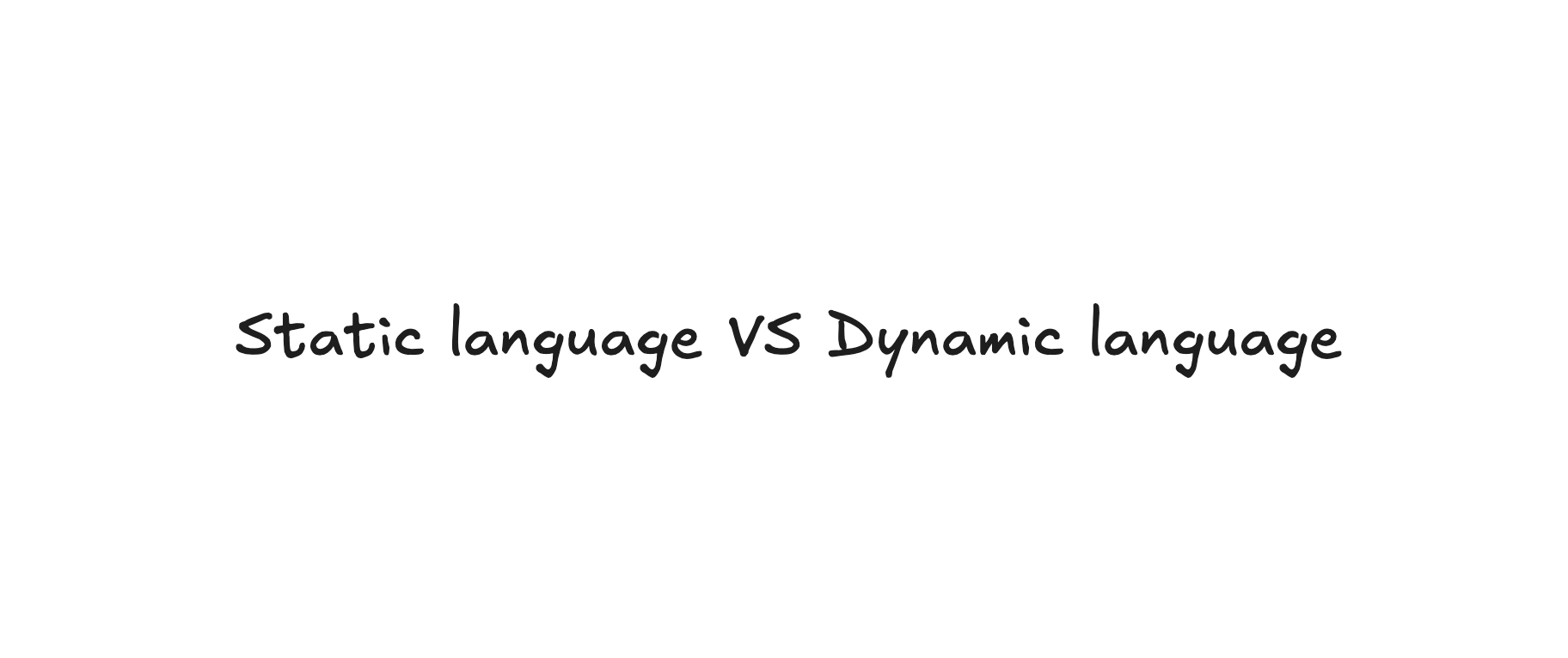Static vs Dynamic Typed Languages 🌟
 Yash Israni
Yash Israni
In the world of programming, one of the fundamental concepts developers encounter is the distinction between static and dynamic typing. Each approach has its strengths and weaknesses, making them suitable for different scenarios. Let’s dive deep into this topic and explore the differences, benefits, and drawbacks of both! 🧑💻
🧐 What is Static Typing?
In static typing, the data type of a variable (int, float, boolean) is determined at compile time. This means you need to declare the data type of variables explicitly, and the compiler ensures type correctness before the program runs.
🔹 Examples of Statically Typed Languages:
Java
C++
C#
Go
🌟 Key Features of Static Typing:
Type Safety: Errors related to type mismatches are caught early during compilation. 🛑
Performance: Programs often run faster because the compiler optimizes the code with known data types. 🚀
Maintainability: Clear type definitions make the code easier to read and maintain, especially in large projects. 📘
✅ Pros of Static Typing:
Early error detection reduces runtime bugs.
Enhanced IDE support with features like auto-completion and type checking. ✨
Scalability for large and complex projects.
❌ Cons of Static Typing:
Requires more code due to explicit type declarations. 🖋️
Slower to prototype and iterate during development. 🐢
🤔 What is Dynamic Typing?
In dynamic typing, the type of a variable is determined at runtime. You don’t need to declare variable’s data types explicitly; the interpreter figures it out as the program executes.
🔹 Examples of Dynamically Typed Languages:
Python
JavaScript
Ruby
PHP
🌟 Key Features of Dynamic Typing:
Flexibility: Variables can change types during execution. 🌀
Ease of Use: No need to specify types, making the code concise and beginner-friendly. 🏃♂️
✅ Pros of Dynamic Typing:
Faster development and prototyping.
Ideal for scripting and small-scale projects. 🛠️
Allows for creative and flexible coding styles. 🎨
❌ Cons of Dynamic Typing:
Errors related to types are discovered only during runtime, which can lead to unexpected crashes. 💥
Debugging can be more challenging. 🔍
Performance may be slower due to type checking at runtime. 🐢
🔄 Key Differences Between Static and Dynamic Typing
| Feature | Static Typing | Dynamic Typing |
| Type Checking | Compile-time 🛑 | Runtime ⏳ |
| Flexibility | Less flexible, strict typing 🧱 | Highly flexible, dynamic 🌀 |
| Error Detection | Early detection during compilation ✅ | Late detection during execution ❌ |
| Performance | Typically faster 🚀 | May be slower 🐢 |
| Ease of Use | Requires explicit type declarations ✍️ | No need for type declarations 🎉 |
🛠️ When to Use Static Typing?
Static typing is ideal for:
Large, complex systems like enterprise applications. 🏗️
Projects requiring high performance, such as gaming engines or financial systems. 💰
Teams where code maintainability and collaboration are critical. 🤝
🌐 When to Use Dynamic Typing?
Dynamic typing shines in:
Rapid prototyping and startups. 🚀
Scripting and automation tasks. 🛠️
Projects focused on simplicity and flexibility, like web development. 🌐
🏁 Conclusion
Choosing between static and dynamic typing depends on your project requirements and team preferences.
Go for static typing if you value performance, scalability, and early error detection.
Opt for dynamic typing if you need quick results, flexibility, and ease of use.
Subscribe to my newsletter
Read articles from Yash Israni directly inside your inbox. Subscribe to the newsletter, and don't miss out.
Written by

Yash Israni
Yash Israni
👋 Hey there! I'm Yash Israni, a passionate developer on a mission to build meaningful and impactful software solutions. 🚀 With a love for coding and a knack for problem-solving, I dive deep into the world of technology to craft elegant and efficient solutions. My journey in software development has been fueled by curiosity, innovation, and a relentless pursuit of excellence. 💻 As a full-stack developer, I thrive in both frontend and backend environments, leveraging a diverse set of tools and technologies to bring ideas to life. From crafting intuitive user interfaces to architecting scalable backend systems, I'm committed to delivering high-quality software that exceeds expectations. 🌱 I'm always eager to learn and explore emerging technologies, constantly sharpening my skills to stay ahead in this ever-evolving landscape. Whether it's mastering new programming languages, diving into cloud computing, or experimenting with cutting-edge frameworks, I'm up for the challenge. 📝 On Hashnode, I share my insights, experiences, and lessons learned along the way. Join me on this journey as we explore the fascinating world of software development together. Let's code, collaborate, and create something extraordinary! 🌟 Connect with me to discuss all things tech, exchange ideas, or embark on exciting projects. Together, let's build the future, one line of code at a time!